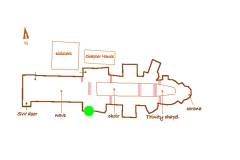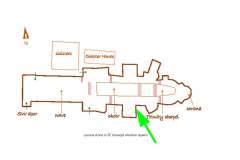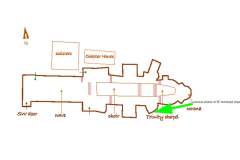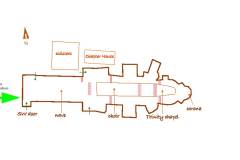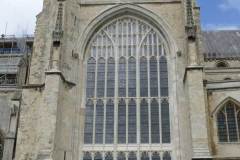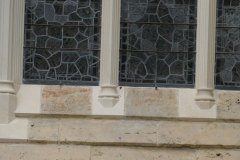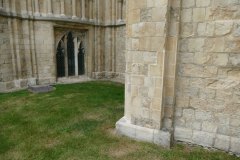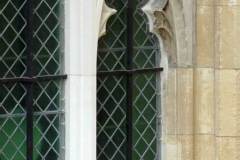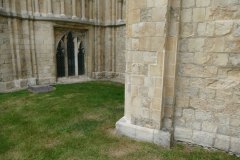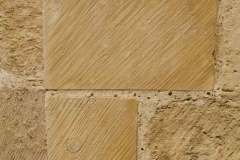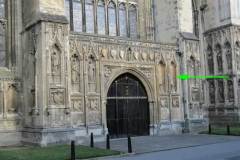Basics
Geology: oolitic limestone
Age: Middle Jurassic
Provenance: Lavoux, Nr. Poitiers, Vienne Department
Where to see examples
- new window in south west transept (images 1, 5 and 6)
- window repairs in east wall of south east transept (images 2, 7 and 8)
- external wall repairs to St Anselm’s chapel (images 3, 9 and 10)
- Royal statues by west door (right above and images 4, 11 and 12).
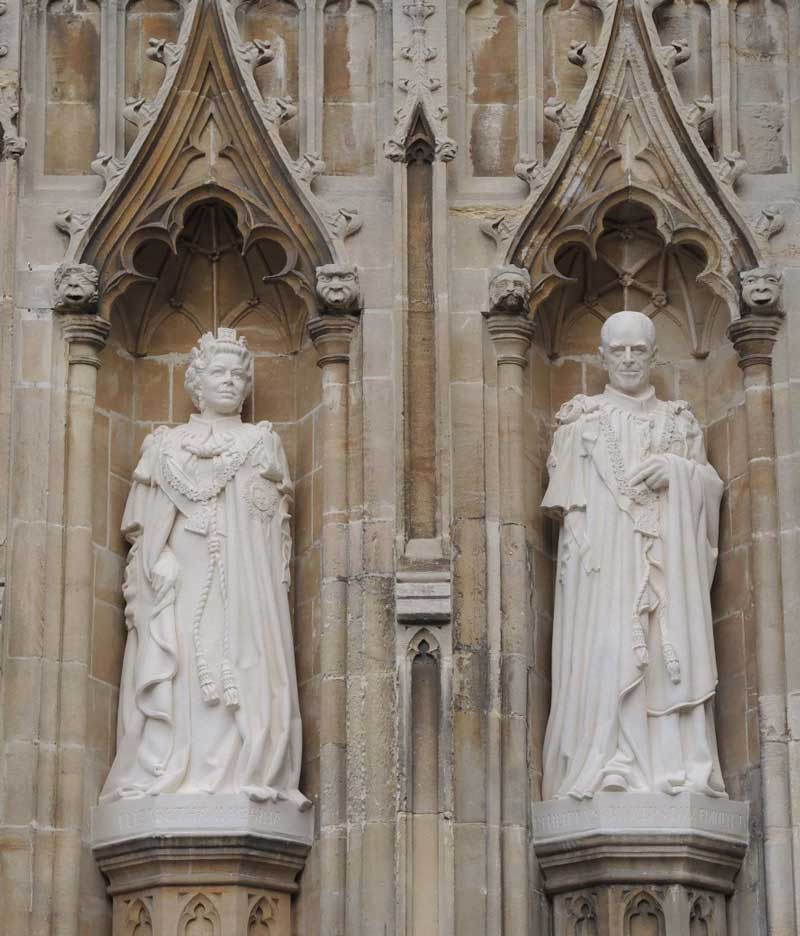
Description
Lavoux Stone is a marine limestone quarried near the village of Lavoux since the fourteenth century. The village is situated about 14 kilometres east of Poitiers in the French Department of Vienne. Locally the stone is also known as Pierre de Lavoux, Lavoux à Grain and Lavoux Fin. The stone has been used for restoration at Canterbury since 1972 when it was known as Lépine Stone, the trade name for stone from the Lépine quarry that was destined for export. In recent years the name Lavoux à Grain for the stone has become widely used by the Canterbury masons, as although extracted from the same quarry as the Lépine, the Lavoux à Grain is taken from a different bed. This bed has a height in excess of one metre and has enabled masons to replace architectural features, such as mullions, requiring these lengths.
Lavoux Stone is Middle Jurassic in age. It is fine-grained and slightly chalky in texture with spherical grains of calcium carbonate called ooliths and shell fragments of marine animals all within a fine-grained carbonate matrix. On fresh exposure the stone is usually white in colour, but over a period of time, of from years to decades, the stone weathers to a similar appearance to that of Caen Stone. When first imported during the early 1970s the stone was seen to be the closest existing match to Caen Stone available at the time. When first placed in the cathedral fabric there were concerns about the whiteness of the stone, although with time the stone can be said to have successfully ‘weathered in’.
Lavoux Stone is supplied in large ‘six-sides sawn’ blocks to the cathedral masons yard where it is cut into smaller block sizes according to need. Much of the restoration work of the last 45 years has been carried out using Lavoux Stone. The stone can be seen in the renewed tracery of the recently restored Great South Window.
The new Great South Window of the south west transept was completed in November 2016. Renovation work cost over £2.2 million. Scaffolding covered the window for 7 years. The original window dates from the 1420s whilst much of its stained glass is of the late 12th and early 13th centuries. Its width of over 7.5 metres makes it the widest in the cathedral. For stone repairs and replacement stone (images 5 and 6), masons used the ‘Lavoux à Grain’ from the upper levels in the Lavoux quarry as it has bed heights of more than 1 metre needed for the mullions.
Nearer to ground level lavoux stone can also be seen in the external ashlar walls of the south east transept (images 7 and 8 – by the Black Prince’s Chantry – an opportunity to see the Lavoux stone close up) and in repairs to St Anselm’s Chapel (images 9 and 10) and the Great Cloister. The Royal Statues installed in 2015 on the western facade (images 11 and 12) were carved by Nina Bilbey from Lavoux Stone. She described her material as “Probably the most beautiful blocks of stone I’ve had the pleasure of carving”.

